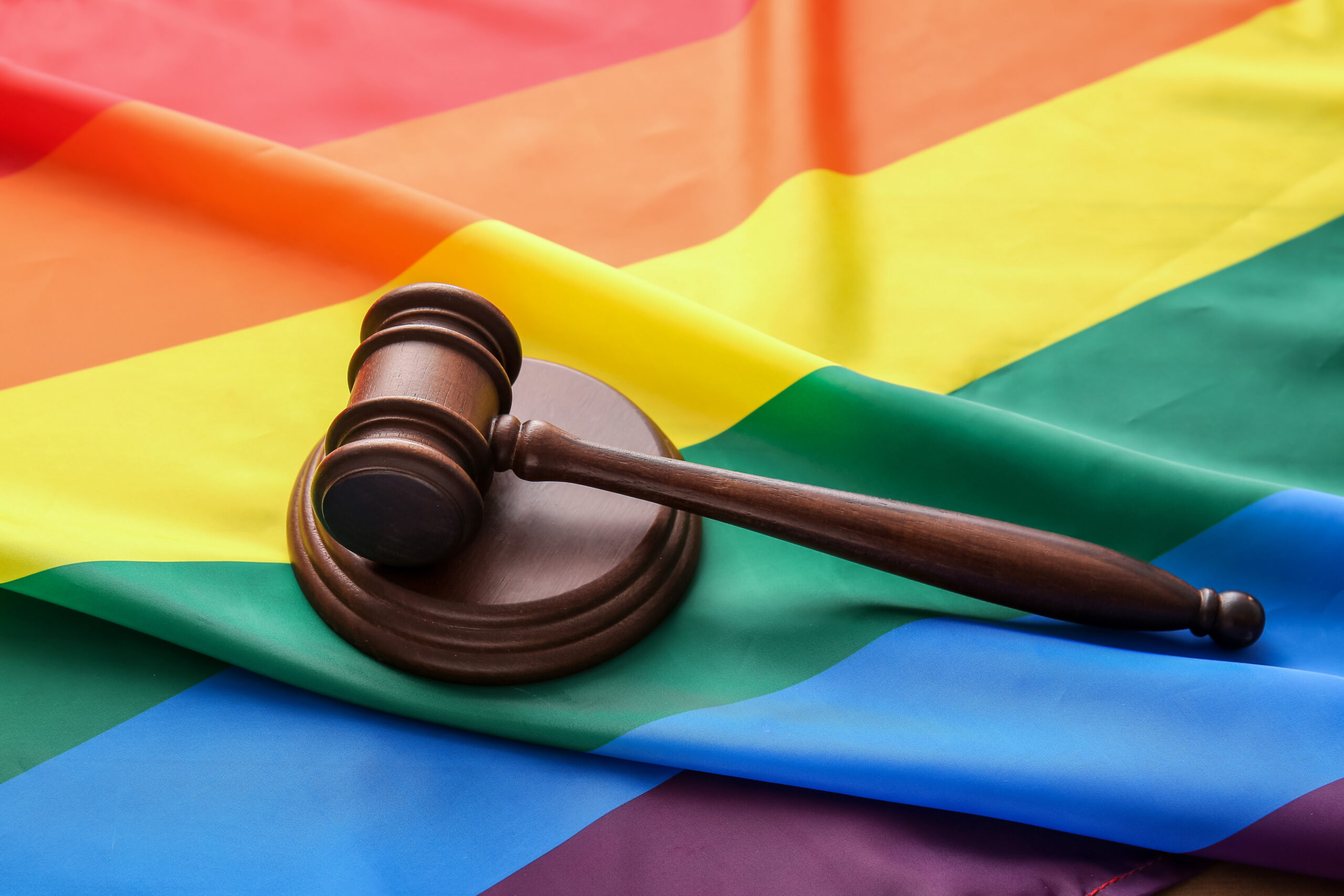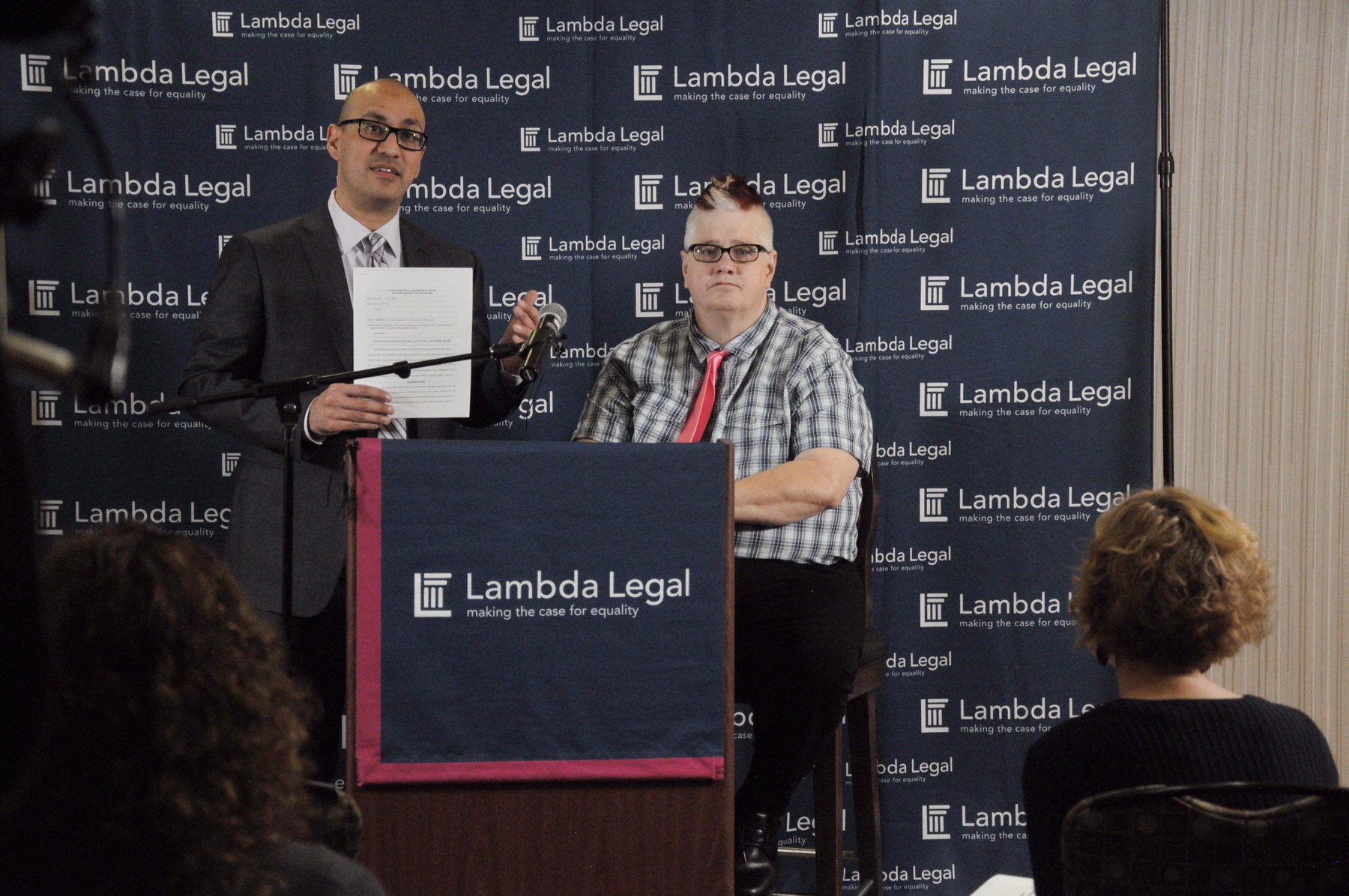Holding Justice Accountable:
Anti-LGBTQ+ Discrimination Protections in Judicial and Attorney Ethics Rules
GO TO: Judicial Codes of Conduct Map | Attorneys Codes of Conduct Map
 LGBTQ+ people are in courthouses and attorneys’ offices every day across the country. While we hear mainly about potentially precedent-setting federal cases, around 98% of all court cases in the U.S. are in state courts. The majority of LGBTQ+ people (and everyone else) who must go to court will encounter judges and attorneys in the courts of the state where they live. But whatever type of court system LGBTQ+ people encounter, sadly, even courthouses and law offices—places where people seek justice—can be unwelcoming and unsafe. Many LGBTQ+ people, like other people in their community, navigate court without the assistance of any attorney due to the high cost of legal representation and limited availability of free or low-cost legal assistance. Navigating court systems, court personnel, and court forms without assistance and without information about their right to be treated fairly and respectfully, can make the process even more daunting.
LGBTQ+ people are in courthouses and attorneys’ offices every day across the country. While we hear mainly about potentially precedent-setting federal cases, around 98% of all court cases in the U.S. are in state courts. The majority of LGBTQ+ people (and everyone else) who must go to court will encounter judges and attorneys in the courts of the state where they live. But whatever type of court system LGBTQ+ people encounter, sadly, even courthouses and law offices—places where people seek justice—can be unwelcoming and unsafe. Many LGBTQ+ people, like other people in their community, navigate court without the assistance of any attorney due to the high cost of legal representation and limited availability of free or low-cost legal assistance. Navigating court systems, court personnel, and court forms without assistance and without information about their right to be treated fairly and respectfully, can make the process even more daunting.
Every state and federal court, except for the U.S. Supreme Court, has an enforceable code of judicial conduct that sets out the ethical rules judges are required to follow. Likewise, each state and federal court has rules of professional conduct that attorneys must follow or suffer potential consequences. Most jurisdictions have modeled their ethics rules after the American Bar Association’s Model Code of Judicial Conduct and Model Rules of Professional Conduct for attorneys. Each set of rules covers a variety of different ethical issues ranging from the use of confidential information and conflicts of interest to fiduciary responsibilities.
 These two maps look at one of the rules judges and attorneys are required to follow in most jurisdictions: the requirement that they not engage in discriminatory, harassing, or biased conduct. This rule has particular importance for LGBTQ+ people who are involved in the legal system. Specifically, these maps show whether sex and/or gender, sexual orientation, gender identity, and gender expression are explicitly protected under this rule in a jurisdiction’s judicial code of conduct and/or attorney rules of professional conduct. While many states do provide these protections, there remain states that do not and many more whose rules could be improved by providing further protections.
These two maps look at one of the rules judges and attorneys are required to follow in most jurisdictions: the requirement that they not engage in discriminatory, harassing, or biased conduct. This rule has particular importance for LGBTQ+ people who are involved in the legal system. Specifically, these maps show whether sex and/or gender, sexual orientation, gender identity, and gender expression are explicitly protected under this rule in a jurisdiction’s judicial code of conduct and/or attorney rules of professional conduct. While many states do provide these protections, there remain states that do not and many more whose rules could be improved by providing further protections.


